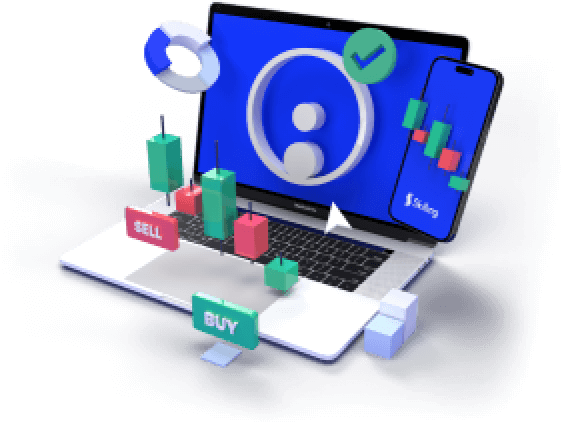For generations, gold has served as the ultimate safe-haven asset, drawing investors and traders alike during times of uncertainty. While gold still commands attention, a new generation of commodities has moved to the forefront of global finance: the battery metals, specifically lithium and nickel. Their demand is fueled not by fear, but by the relentless march of technological progress—the global transition to electric vehicles (EVs) and renewable energy storage. For CFD traders in the Nordic region, this market shift is particularly relevant. The Nordic countries are not just observers; they are actively building a "battery belt" through local mining interests, cell manufacturing (gigafactories), and advanced recycling. Understanding this explosive demand and the local supply chain dynamics provides a critical edge for trading the volatility of these essential metals. This article moves beyond the traditional narrative, exploring the powerful drivers behind the lithium and nickel surge and outlining practical strategies for CFD traders to navigate this high-growth sector.
Access 1,200+ global CFDs instruments.
Access a plethora of trading opportunities across the financial markets.

Thematic Analysis: Drivers of the Battery Metal Boom
The EV and Green Revolution Engine
The primary force driving the surge in demand for lithium and nickel is the global energy transition. Government policies across Europe, including ambitious targets for phasing out internal combustion engines, have created a structural, long-term boom for electric vehicle sales. Lithium and nickel are indispensable components of the most energy-dense battery chemistries, such as Nickel Manganese Cobalt (NMC) and Nickel Cobalt Aluminium (NCA).
The impact is stark. Demand for lithium has tripled over the last five years, and nickel demand from the energy sector has jumped significantly in the same period. This growth is compounded by the rapid expansion of stationary energy storage systems—large-scale batteries used to stabilise power grids and integrate intermittent sources like solar and wind power. These storage solutions require vast amounts of the same battery metals, creating a dual demand shock that far outstrips existing supply capacity. For CFD traders, this fundamental imbalance between structural demand and finite supply translates directly into price volatility and directional trends, particularly for companies involved in extraction and processing.
The narrative is one of industrial necessity. These are no longer niche commodities; they are the critical raw materials defining the future of transportation and power generation. Trading in the stocks of companies connected to this value chain means speculating on the speed and scale of global decarbonization.
The Critical Nordic Supply Chain and Policy Support
The Nordic region—Sweden, Norway, and Finland—has become a focal point for securing Europe's battery supply chain. Policy initiatives such as the EU Critical Raw Materials (CRM) Act aim to reduce Europe's dependence on foreign sources, pushing development toward politically stable regions with strong environmental standards, like the Nordics.
In Sweden and Norway, there is an aggressive push to establish a full battery ecosystem, spanning from resource extraction to final recycling. This is driven by local expertise in mining, manufacturing, and abundant access to clean, low-cost hydropower, which is essential for energy-intensive processes like battery cell production. The geopolitical stability and regulatory certainty of the region act as a premium factor when comparing these local stocks to global counterparts operating in riskier jurisdictions.
Specific publicly-listed Nordic companies illustrate this local interest, providing relevant CFD trading opportunities. Traders may monitor the performance of firms such as:
- Nordic Mining ASA (NOM) : A Norwegian firm with interests in mineral projects, including the development of a battery-grade lithium project in Finland (Keliber).
- Eurobattery Minerals AB (BAT) : A Swedish company focused on nickel and lithium deposits in the region.
- Boliden AB (BOL) : A major Nordic base metals producer whose industrial output is closely tied to the broader economic health of the battery sector.
- Norsk Hydro ASA (NHY) : While primarily aluminium, its significant energy segment and involvement in the broader materials and industrial transition are relevant to the battery theme.
The performance of these stocks is now directly linked to exploration success, permitting processes, and the execution of their development plans, adding layers of local, event-driven volatility that CFD traders can monitor.
Volatility, Supply Constraints, and Geopolitical Influence
The market for lithium and nickel is characterised by extreme volatility, stemming primarily from severe supply constraints. Unlike gold, where price is often driven by sentiment, battery metal prices are deeply affected by the physical realities of supply and demand.
The dominance of key producing regions, such as Indonesia for nickel, creates geopolitical risk. Disruptions, policy changes, or export restrictions in these areas can cause immediate and sharp price spikes globally, as seen in recent years. This high market sensitivity means that an announcement of a new mine delay, a government policy intervention, or even a weather event can trigger a significant price reaction.
For CFD traders, this is where the risk and opportunity balance is most acute. Prices can rebound sharply—as lithium did recently after a prolonged correction—creating a momentum trade. Conversely, announcements of new production capacity or a temporary slowdown in EV sales can cause equally sudden price corrections. Traders must therefore stay informed not only of local company news but also of global supply chain logistics, trade policy changes, and inventory levels in key commodity exchanges. The market is transitioning from an oversupply correction phase to a restocking cycle, making short-term trend analysis highly relevant.
Practical Insights into CFD Market Volatility
Event-Driven Volatility Trading: Due to the sector's focus on capital-intensive projects, stocks of Nordic miners and battery developers react strongly to news. CFD traders often target volatility around key corporate events: drilling results, resource updates, environmental permits, and strategic partnerships with major automotive or battery manufacturers. These are often binary events that lead to sudden and significant price gaps or sharp directional moves. CFDs provide the necessary leverage and flexibility to react swiftly to this news flow.
Inter-Market Ratio Analysis: While moving beyond gold, traders can still use traditional inter-market analysis. Monitoring the Nickel-to-Copper Ratio or the price of Lithium Carbonate against key base metals can provide leading indicators of industrial demand strength. Furthermore, traders can compare the performance of a Nordic battery stock (like those listed above) against the relative performance of the local benchmark index (like the OMXS30 or OSEBX) to identify relative sector strength or weakness.
Supply Chain Hedging: CFDs allow traders to take positions on different parts of the value chain. A trader bullish on the overall EV trend might take a long position on a Nordic lithium company, while simultaneously taking a smaller short position on a producer from a geopolitically less stable region to hedge against potential price risk in their primary position. This requires a nuanced, multi-instrument approach.
Conclusion
The shift in the investment landscape from gold's safe-haven appeal to the industrial necessity of lithium and nickel represents a generational trading opportunity. For Nordic CFD traders, this trend is amplified by the emergence of a strong, policy-backed local battery value chain. Success in this sector hinges on two factors: a deep understanding of the global supply-demand deficit driven by the EV revolution, and a disciplined approach to risk management that acknowledges the inherent volatility of resource stocks. By focusing on key corporate events and broader inter-market signals, traders can position themselves to capitalise on the ongoing surge in these critical materials.
Why miss out on the commodities market's potential?
Discover the untapped opportunities in top traded commodities CFDs like gold, silver & oil.

FAQs
1. What are the primary drivers of lithium and nickel price volatility?
The volatility is driven by the severe mismatch between surging industrial demand (EVs, energy storage) and constrained global supply, exacerbated by geopolitical risks and lengthy mine development times.
2. Are Nordic battery metal companies primarily focused on mining?
No. The Nordic battery ecosystem is comprehensive, including mining (e.g., lithium and nickel exploration), refining, cell manufacturing (gigafactories), and advanced recycling.
3. What are examples of Nordic companies tied to this market?
Relevant companies include Nordic Mining ASA (lithium project interest), Eurobattery Minerals AB (nickel/lithium focus), and Boliden AB (base metals production relevant to industrial demand).
4. How can I manage the high risk of trading these volatile stocks?
Disciplined risk management is crucial. CFD traders may use tight position sizing and mandatory Stop-Loss orders to limit potential losses from sudden, event-driven price movements common in resource exploration stocks.
5. Why is this sector different from trading gold?
Gold is primarily driven by monetary factors (interest rates, inflation, fear). Lithium and nickel are driven by industrial and structural demand, tying their performance directly to the physical deployment of clean energy technology.











